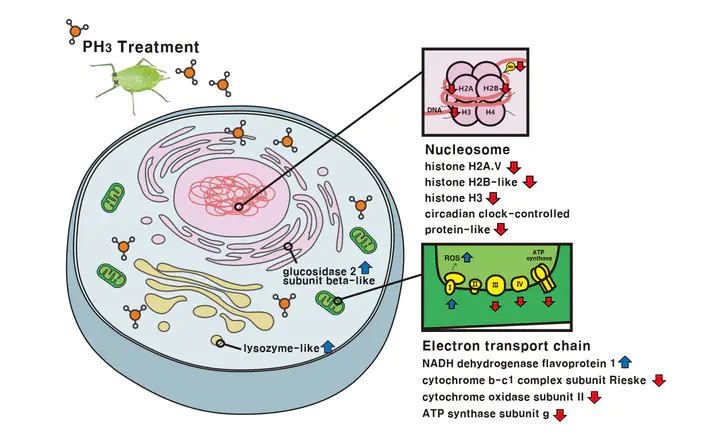Proteomic Evaluation of Insecticidal Action of Phosphine on Green Peach Aphids, Myzus persicae

Abstract
Phosphine (PH3) fumigation is one of the best alternatives to methyl bromide for regulating insect pests during storage and shipping. Recently, this treatment has been applied to other agricultural insect pests, including Myzus persicae. To understand the mode of PH3 toxicity in M. persicae, proteomic analyses using liquid-chromatography tandem mass spectrometry were conducted to measure comparative protein expression levels between PH3-treated samples and controls. PH3 treatment increased NADH dehydrogenase (ubiquinone) flavoprotein 1, mitochondrial-like (complex I) expression, but decreased complex II and ATPases in the mitochondrial electron transport chain (ETC) of M. persicae. Glucosidase and antimicrobial proteins such as lysozymes showed enhanced expression in PH3-treated M. persicae. Some regulatory proteins related to apoptosis were more abundant in PH3-treated M. persicae. Biochemical activities of acetylcholinesterase (AChE) and cytochrome c oxidase (COX) were also measured because these enzymes are known to be targeted by PH3. Only COX activity decreased in relation to increasing PH3 concentrations in adult M. persicae. The expression of six selected genes were determined in relation to PH3 treatments. No two-fold changes in the expression of the six genes was observed. Thus, PH3 toxicity caused disruption in the ETC and glucose supply, as well as dis-regulation of apoptosis in M. persicae.